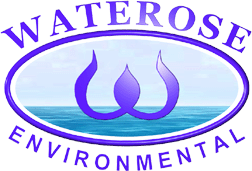 | ||||||
| Articles | Projects | Resume | Cartoons | Windsurfing | Paintings | Album |
Esquimalt Lagoon
State of the Ecosystem Report
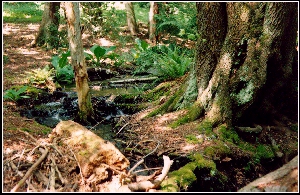
Water Quality Analysis Project 1998
Waterose et. al.

Section 4. Nutrients and Coliforms:
Nitrogen and Nitrates:
In most soils, over ninety per cent of the nitrogen content is in organic form. This is primarily the product of the bio-degradation of dead plants and animals. Nitrogen is eventually hydrolyzed to ammonium (NH4+), which can be oxidized to nitrate (NO3-) by the action of bacteria in soil. Nitrogen is most generally available to plants as NO3- (Manahan, 1994). Because of its negative charge, nitrate does not strongly adsorb to soil colloids. Therefore, in liquid phase it is highly mobile and subject to leaching within soil. The primary sinks and pathways of nitrogen in soil are illustrated in Figure 4.1 below.
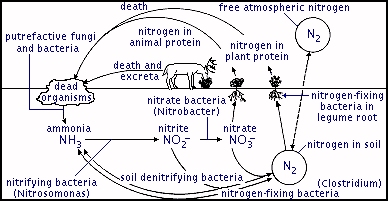
Nitrates may contaminate both ground and surface waters. High-nitrate waters can lead to eutrophication, increased algae growth, and increased Biological Oxygen Demand (BOD). A report by Watanabe and Robinson indicated that the streams that enter the Lagoon contain high concentrations of nitrate, and moderate to low concentrations of phosphate and ammonia. Ammonia and phosphate can be stimulants to phytoplankton growth in the Lagoon (Robinson & Watanabe, 1980).
The established maximum concentration levels for safe drinking water are: 10 mg/L NO3- by the Environmental Protection Agency (EPA), and, 11.3 mg/L NO3- by the World Health Organization (WHO). Concentrations above these levels pose a hazard primarily for infants. The safe level for adults is probably higher, but remains unknown (Papper, Gerba, and Brussean, 1996).
Fertilizers, animal waste, municipalities, industries, and geologic formations are all possible sources of NO3- pollution. They typically affect water systems slowly and uniformly. In some cases, the impacts of NO3- are mitigated by natural mechanisms, such as their uptake by plants. However, in other cases, the cumulative effects can lead to a rapid collapse of an aquatic system (Papper, Gerba, and Brussean, 1996). A rain event can trigger a pulse, or increased release of nitrates in the soils.
Fecal Coliforms:
Fecal coliforms are a group of microorganisms that live in the guts of warm-blooded animals (Kentucky Water Watch, 1998). This group is composed of all aerobic and facultative anaerobic, gram-negative, non-spore forming and rod shaped bacteria that do not form spores as a reproductive strategy (Walter, 1993). The coliform, Escherichia coli, are illustrated in Figure 4.2. The presence of these organisms in water does not pose any threat to human health. Nonetheless, due to their nature and the fact that pathogens are difficult to detect in water, fecal coliforms are widely used to indicate the presence of other pathogenic microbes. Pathogenic organisms are quite likely to be present in a water system with a high fecal coliform bacteria count (Michigan, 1998).
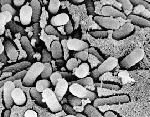
Humans generally degrade water quality through the failure of septic systems and sewage outfalls (Tuthill & Meikle, 1998) (Papanek & Paul, 1994). Wildlife can also contribute pathogenic microbes, such as Aeromonas sp., Salmonella sp., and Escherichia coli (Moorhead & Davis, 1998). The question of which source is more profound is not relevant. Although anthropogenic sources may seem to be more significant, high counts of fecal coliform from wildlife may signal the same level of health risks (Papanek & Paul, 1994). The difference lies in people’s ability to control anthropogenic sources as opposed to those from wildlife.
The types of waterborne diseases that may be present with fecal coliforms include typhoid, bacillary dysentery, hepatitis, and diarrhea (Papanek & Paul, 1994) (Saidi et al, 1997) (Ashraf & Yunus, 1997) (Michigan, 1998). However, gastroenteritis is the only disease to date that has been reported to have a mathematical dose-response relationship between increased fecal coliform levels and a subsequent risk of illness (Fleisher, Salmon & Jones, 1996). Table 4.1 summarizes common waterborne diseases caused by bacteria and viruses (Defense Council, 1998).
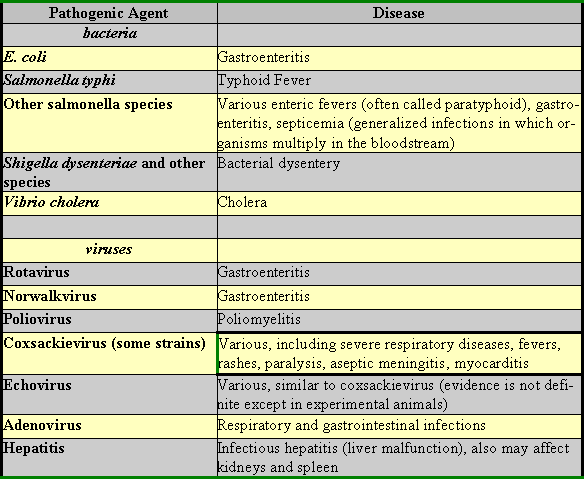
One study has established a correlation between a high concentration of fecal coliforms in water and ear infections, eye and skin ailments, after primary contact which is direct contact between the water and the skin (Papanek & Paul, 1994) (Fleisher, Salmon & Jones, 1996).
Some studies suggest that children are at higher risk with regard to acute gastroenteritis than adults. Also, it is suggested that tourists or other visitors are at higher risk than persons who swim regularly at the same location (Papanek & Paul, 1994). Whether certain members of the population, including persons with compromised immunities, are at higher risk is still unclear.
To Section 5. Red Tides and Fish Kills
Index:
- Introduction
- History and Land Use
- Geomorphology
- Nutrients and Coliforms
- Red Tides and Fish Kill
- Hydrocarbons
- Sample Procedure
- Analysis Procedure
- Results
- Discussion
- Future Study
- References
- Photo Album


 email Waterose
email Waterose
Please Sign My Guestbook
Please View My Guestbook

| Articles | Projects | Resume | Cartoons | Windsurfing | Paintings | Album |
 | ||||||